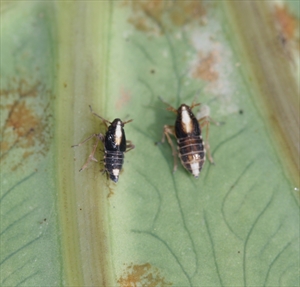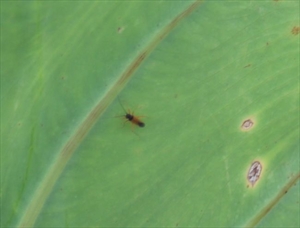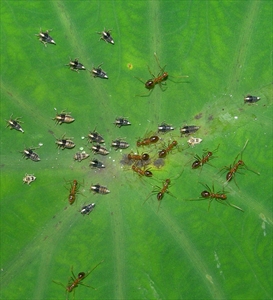- Narrow distribution. Southeast Asia, Oceania. Three types. On taro. An important pest.
- The planthoppers damage taro by sucking the sap from the leaves. In dry times, when numbers are high, the leaves bend down. They spread several viruses.
- Winged adults arrive first in new gardens, laying eggs in the base of leaf stalks, producing wingless adults.
- Natural enemies: egg-sucking bug.
- Cultural control: avoid planting new crops next to old; remove outer leaves with eggs before planting 'tops'. Note that rains drown the young nymphs.
- Chemical control: PDPs: neem, pyrethrum, or derris; or use synthetic pyrethroids, but they are likely to kill natural enemies.










